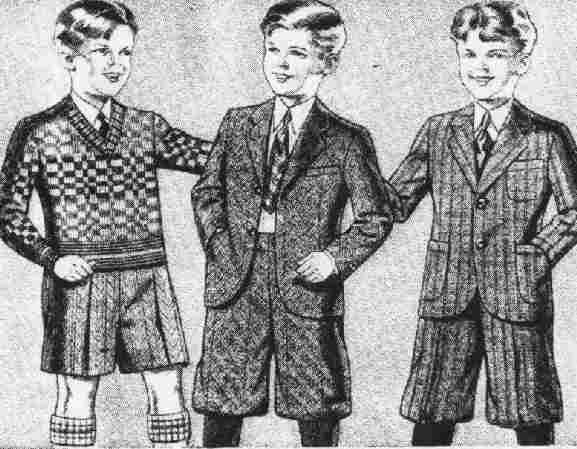
Figure 1.--These knicker suits for younger boys were advertized in the 1929 Sears catalog. There were other styles for older boys. |

|
Most American boys wore knickers in the 1920s. Knee pants were still worn by younger boys in the eraly 1920s, but by the mid-1920s had almost totally been relaced by short pants or knickers. Quite old boys were wearing knickers in 1920, but the age boys began wearing long pants declined during the decade. Knickers were still widely worn in the 1930s, but mostly by younger elementary school boys, less commonly in highschool. These trends can be easily followed in the photoraphic record, especialy school portraits. Trends can also be seen in detail in the popular catalogs of the day.
American boys in the 1910s wore both knee pants and knickers, but knickers were by far dominant. This was a huge change in boys wear. Knee pants had dominated boys wear for decades. Then all of a sudden a stunning shift occurred (1908-09). Knickers had been worn for some time in Europe, but were not commonly worn in America. This suddenly changed and we have no idea why. By 1910 most American boys were wearing knickers rather than knee pants. Some younger boys were still wearing knee pants in 1919, especially younger boys. Knickers were throught the decade the primary type of pants worn by boys. We see that very definatively in the photograohic record, especially school portraits. It was not s pronounced in rural areas where overalls had become prevalent. In city schools, however, virtually all the boys were often wearing knickers. We can also follow trends in the popular mail order catalogs of the day.
Most American boys wore knickers in the 1920s. Knee pants were still worn by younger boys in the eraly 1920s, but by the mid 1920s had almost totally been relaced by short pants or knickers. Quite old boys were wearing knickers in 1920s, but the age boys began wearing long pants declined during the decade. At the beginning of the decade, above-the-knee knickers with long stockings were common, but below-the-knee knickers with kneesocks became more common as the decade progressed.
American boys still commonly wore knickers during the 1930s. We notice photographs showing many boys wearing them. Shool portraits show they were common at school, although much more during the early 30s than the late part of the decade. The Sears 1930 catalog provdes a good indication of trends at the beginning of the decade. We note knickers being worn by boys up to age 18 in 1930s. This age range is suggested by Sears catalogs. It was not, nearly as common as in the 1920s for older boys to wear them, especially as the decade progressed. By the end of the decade it was primarily elementary school boys still wearing knickers. A few younger teens wore knickers, but it was increasingly less common. Most boys began getting long pants suits at least by the time they began senior highschool at 14 years of age. Boys mostly wore below the knee knickers with knee socks. We note boys wearing dark knicker suits for their confirmation in 1932. The knickers we see in the 1930s are almost all ones designed to be buckled below the knee. And they tended to be worn with knee socks rather than long stockings as was still common in the 1920s. We also see boys wearing knickers that were not part of suits. Corduroy knickers were especially common for schoolwear.
Knickers declined in popularity during the 1930s. There were still, however, many boys still wearing knickers at the begiining of the decade. This is apparent both from available photographs and the number of knickers offered in catalogs. The photograophic record shows a higly variable situatiion. We notice photographs will all the boys wearing lon pants and others with all the boys wearing knickers and of course mixed knickers and long pants in groups. Most of the boys wearing knickers seen to be wearing knee socks rather than long stockings. We also notice short pants. There seem to be a range of factors such as age , seasonality, and regions involved. We still note quite a few boys wearing knickers during 1940 and 1941. We note however that after Pearl Harbor and America's entry into World War II that knickers very rapidly go out of styles. There was a destinct drop in knickers by 1943. We think Government regulationse a factor, but we do not yet have details. The Boy Scouts and Cub Scouts even dropped knickers in 1943. By the end of the War in 1945, knickers are not at all common in catalogs and a rarilty in available period photographs. We still see boys occassional wearing knickers even in the early 1950s, but they are by 1945 not all all common.
Navigate the Boys' Historical Clothing Web Site:
[Return to the Main U.S. knicker suit page]
[Introduction]
[Activities]
[Biographies]
[Chronology]
[Cloth and textiles]
[Clothing styles]
[Countries]
[Topics]
[Bibliographies]
[Contributions]
[FAQs]
[Glossaries]
[Images]
[Links]
[Registration]
[Tools]
[Boys' Clothing Home]
Navigate the Historic Boys ' Clothing Web chronol ogical pages:
[The 1900s]
[The 1910s]
[The 1920s]
[The 1930s]
[The 1940s]
[The 1950s]
Navigate the Historic Boys' Clothing Web style pages:
[Jackets]
[Long pants suits]
[Blazers]
[Kilts]
[S ailor suits]
[Short pants suits]
[Ring bearer/page costumes]
[Eton suits]
